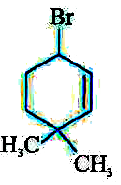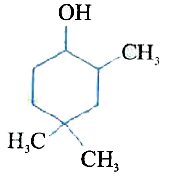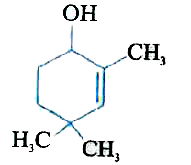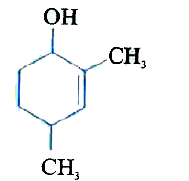Hydrolysis of trichloro methane with aqueous KOH gives
Methanol
Ethanol
Acetic acid
Formic acid
The correct Answer is:D
To solve the problem of hydrolysis of trichloromethane (CHCl3) with aqueous KOH, we can follow these steps:
Step 1: Identify the Reactants
- The reactant is trichloromethane (CHCl3), also known as chloroform, and it is being reacted with aqueous potassium hydroxide (KOH).
Hint: Remember that trichloromethane has three chlorine atoms attached to a single carbon atom.
Step 2: Understand the Hydrolysis Process
- Hydrolysis involves the reaction of a compound with water, leading to the substitution of chlorine atoms by hydroxyl (OH) groups. In this case, KOH provides the hydroxide ions (OH⁻) necessary for the reaction.
Hint: Hydrolysis typically involves the substitution of a leaving group (in this case, Cl) with a nucleophile (OH⁻).
Step 3: Perform Nucleophilic Substitution
- The hydroxide ions will attack the carbon atom in trichloromethane, leading to the substitution of the chlorine atoms. The first substitution will replace one Cl atom with OH, forming dichloromethanol (CHCl2(OH)).
Hint: Nucleophilic substitution reactions often proceed through a mechanism where the nucleophile attacks the electrophilic carbon atom.
Step 4: Continue Substitution
- Continuing the hydrolysis, the second hydroxide ion will replace another Cl atom, forming monochloromethanol (CHCl(OH)2).
Hint: Each substitution step can lead to an intermediate product before reaching the final product.
Step 5: Final Product Formation
- The final substitution will replace the last Cl atom with OH, resulting in the formation of methanol (CH3OH) and the release of HCl gas. However, since we are considering the complete hydrolysis, we can also consider the formation of formic acid (HCOOH) if we consider the loss of water (H2O) after multiple substitutions.
Hint: The final product can vary based on the conditions of the reaction and the extent of hydrolysis.
Conclusion
- The hydrolysis of trichloromethane (CHCl3) with aqueous KOH primarily leads to the formation of formic acid (HCOOH) as the final product after the removal of water.
Final Answer: The hydrolysis of trichloromethane with aqueous KOH gives formic acid (HCOOH).
- The reactant is trichloromethane (CHCl3), also known as chloroform, and it is being reacted with aqueous potassium hydroxide (KOH).
- Hydrolysis involves the reaction of a compound with water, leading to the substitution of chlorine atoms by hydroxyl (OH) groups. In this case, KOH provides the hydroxide ions (OH⁻) necessary for the reaction.
- The hydroxide ions will attack the carbon atom in trichloromethane, leading to the substitution of the chlorine atoms. The first substitution will replace one Cl atom with OH, forming dichloromethanol (CHCl2(OH)).
- Continuing the hydrolysis, the second hydroxide ion will replace another Cl atom, forming monochloromethanol (CHCl(OH)2).
- The final substitution will replace the last Cl atom with OH, resulting in the formation of methanol (CH3OH) and the release of HCl gas. However, since we are considering the complete hydrolysis, we can also consider the formation of formic acid (HCOOH) if we consider the loss of water (H2O) after multiple substitutions.
- The hydrolysis of trichloromethane (CHCl3) with aqueous KOH primarily leads to the formation of formic acid (HCOOH) as the final product after the removal of water.
Similar Questions
Knowledge Check
- Question 1 - Select One
Hydrolysis of trichloromethane with aqueous KOH gives
APotassium formateBAcetyleneCChloralDMethanol - Question 2 - Select One
Hydrolysis of trichloromethane with aqueous KOH gives
AmethanolBacetic acidCethanolDformic acid - Question 3 - Select One
 on treatment with aqueous KOHA
on treatment with aqueous KOHA B
B C
C D
D

